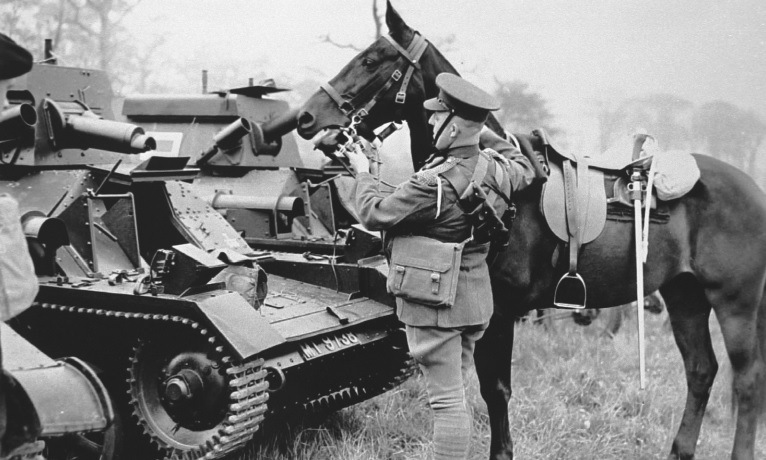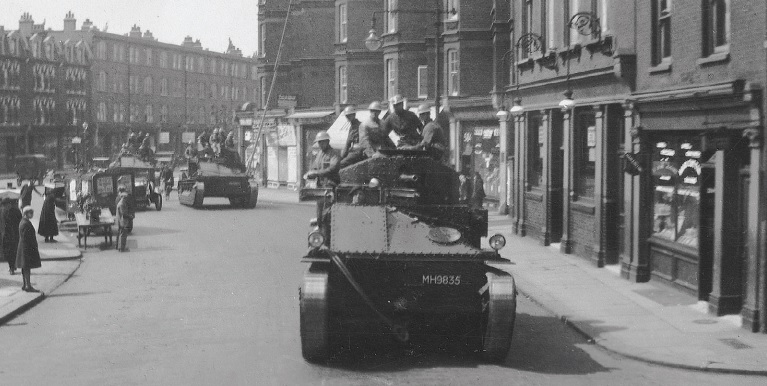
THE CREATION OF THE RAC
We used to love and ride away but now we screw and bolt.’
The cavalry had not had a good war on the western front in the First World War, but many senior officers at the War Office were from the cavalry and, like most people who had worked with horses, deeply loved them. In the post war period the prospect of giving up centuries of tradition – and of course the horse itself – created a period of passionate debate not just in the Army, but with the wider public at large.
In 1927 an Experimental Mechanized Force was created to test some of the ideas of how modern vehicles might be used in future battles and JFC Fuller – doyen of the new school of mechanized thought – was offered the role of commander. He turned the post down (citing not enough support and too many other responsibilities) so its command was taken by an infantry Brigadier R J Collins. Large exercises on Salisbury Plain showed how the Experimental Mechanised Force could speedily out-manoeuvre traditional forces such as marching infantry, cavalry and horse-drawn artillery. Re-named the Armoured Force, new vehicles and structures were tried along with radio communication and the experiments were widely reported on and proved influential not just to the British Army but to other supporters of armoured vehicles in Europe.
Arguments continued over the next decade as to the best combination of tanks and infantry and the proportion in which they should create a balanced force along with supporting arms such as the artillery and engineers. However the British High Command saw mechanization of the whole Army as a logical next step, despite arguments from some quarters who saw the loss of the horse as a step too far. The economic crash of 1930 meant simply there was not enough money to allow mechanization at anything other than a slow pace over the decade and there were few effective vehicles available to replace the horse in service.
Practical matters such as the change from horse drawn transport to motorized on Britain’s roads and the increasing use of tractors in agriculture meant the whole of society was changing. The cavalry found recruiting harder to achieve as mechanized units appeared to give a more valuable and relevant trade to recruits. Inevitably there were jokes from both sides on the snobbery attached to the cavalry or the vulgarity of mechanics.
Giving the cavalry lighter vehicles for scouting and flank screening seemed appropriate to play on their traditions of élan and dash and the lack of money meant the mechanization process was carried out unit by unit in the 1930’s, rather than in one potentially soul destroying moment. There was also a powerful argument that in some parts of the Empire the horse was still the best method or scouting or transport.
On April 4th 1939 the cavalry regiments and the Royal Tank Corps were combined into what was described as a loose association to form the Royal Armoured Corps. There was an intention ultimately to merge all the regiments under one cap-badge but the war was only months away. The rapid expansion of the Corps as yeomanry and infantry units were converted to armour put off any further changes but the new Corps organized training and doctrine and influenced the equipment the Regiments would use.
“The formation of the new corps will enable similarly equipped units to be similarly trained and administered, with increased military efficiency…The new corps is formed by association rather than amalgamation.”
Mr Hore-Belisha, Secretary of State for War, April 4th 1939

A Yeomanry Trooper introduces his horse to a Light Tank Mark IIA, c.1939

Light Vickers tanks on the move